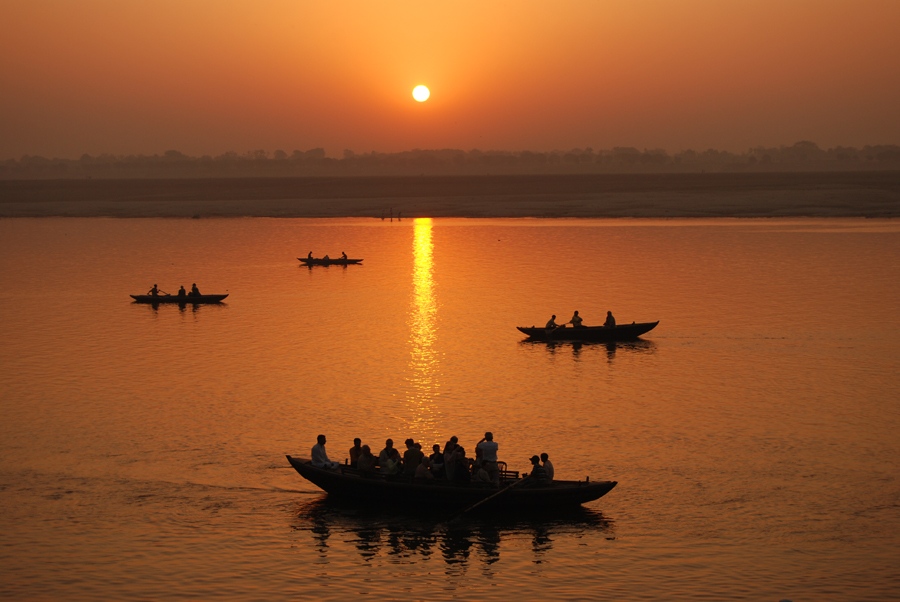The great river banks at Varanasi, built high with eighteenth and nineteenth-century pavilions and palaces, temples and terraces, are lined with an endless chain of stone steps – the ghats – progressing along the whole of the waterfront, altering in appearance with the dramatic seasonal fluctuations of the river level. Each of the hundred ghats, big and small, is marked by a lingam, and occupies its own special place in the religious geography of the city. Some have crumbled over the years, others continue to thrive, with early-morning bathers, Brahmin priests offering puja, and people practicing meditation and yoga. Hindus puja, and people practicing meditation and yoga. Hindus regard the Ganges as Marita, the elixir of life, which brings purity to the living and salvation to the dead; sceptical outsiders tend to focus on all-persuasive and extreme lack of hygiene. Ashes to the dead, emissions from open drains and the left-overs from religious rites float by the devout as they go about their bathing and ceremonial cleansing.
For centuries, pilgrims have traced the perimeter of the city by a ritual circumambulation, paying homage to shrines on the way. Among the most popular routes is the Panchatirthi Yatra, which takes in the Pancha, (five) Trithi (crossing) of Asi, Dashashwamedha, Adi Keshva, Panchganga and finally Manikarnika. To gain merit or appease the gods, the devotee, accompanied by a panda (priest), recites a sankalpa (statement of intent) and performs a ritual at each stage of the journey. For the casual visitor, however the easiest way to see the is to follow a south-north sequence either by boat or on foot by Shubh Yatra Happy Travelling.







No comments:
Post a Comment